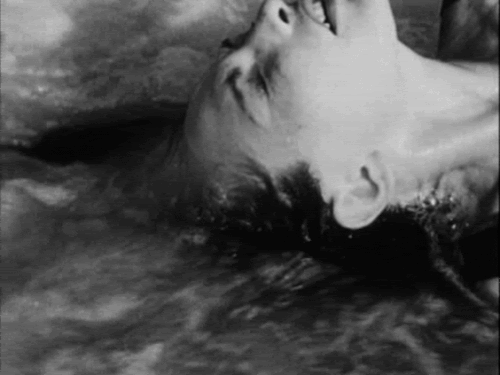
‘Alexandr Hackenschmied (December 17, 1907 – 26 July 26, 2004). He was one of the most significant personalities of Czech film and photograph avant-garde. In the beginning of the 1930’s, he was a distinct promoter of world avant-garde movements and he organized one of the first avant-garde film projections in Prague, showing various films including those of Man Ray.
‘He was a leading photographer, film director, cinematographer and editor in Czechoslovakia between the two world wars. In 1938, he immigrated to the U.S. and became involved in American avant-garde cinema. He officially changed his name to Alexander Hammid when he became a citizen of the United States in 1942.
‘He is best known for three films: Crisis (1939), Meshes of the Afternoon (1943) and To Be Alive! (1964). Meshes of the Afternoon was made with his wife Maya Deren, to whom he was married from 1942 to 1947.
‘He also directed The Forgotten Village in 1941, a documentary examining the conflicts between the coming of modernization and the traditional culture of a small Mexican village. This film was banned for its depiction of childbirth.
‘It was in the United States where he met and married Eleanora Deren. He was the artist who later named her “Maya”, the name she became known for. Meshes of the Afternoon was a home movie made by the two of them. At that point, Maya had no experience in filmmaking.
‘On her Wikipedia page it states “Maya Deren was one of the most important American experimental filmmakers and entrepreneurial promoters of the avant-garde in the 1940s and 1950s. Deren was also a choreographer, dancer, film theorist, poet, lecturer, writer and photographer.” It was her collaboration and relationship with Alexander that set this in motion.
‘In 1965, Alexander won the Academy Award for Best Documentary (Short Subject) for To Be Alive! Hammid also worked in partnership with filmmaker Francis Thompson (1908–2003) for over 25 years, producing numerous “in-house” documentaries as well as several films for general viewership.
‘One of the most notable of these is the first IMAX format film, To Fly! (1976), which premiered at the Smithsonian Institution’s National Air and Space Museum (NASM) at the museum’s grand opening celebration on July 1, 1976. The film is a brief summary of the history of flight, from 19th century balloons through 21st century space probes, while simultaneously showing off the new Imax film medium. The evolution of flying technology is portrayed in parallel with the story of the westward exploration of America and the rural-to-cosmopolitan transformation of American society.
‘Hammid was the pioneer of multi-projection and IMAX films, with his work being shown at various world exhibitions. To Fly! was produced in conjunction with MacGillivray Freeman Films and it continues to play regularly at the Air and Space Museum.
‘Hammid lived to be 96 years old and his associates suggest his Buddhist lifestyle, which he adopted after making a film in India for his longevity. If you are interested in his life and work, we highly recommend Aimless Walk (Bezúčelná procházka): Alexander Hammid (1996) based on his life and work by Austrian film director, Martina Kudláček who directed the documentary.’ — Everything Czech
____
Stills
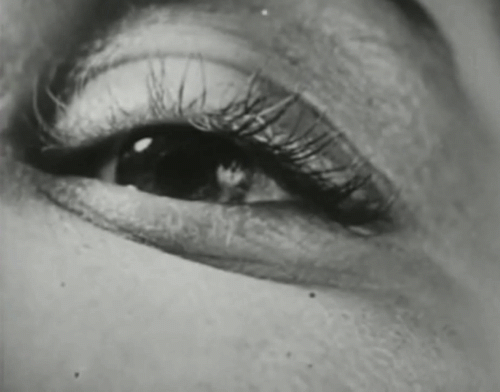

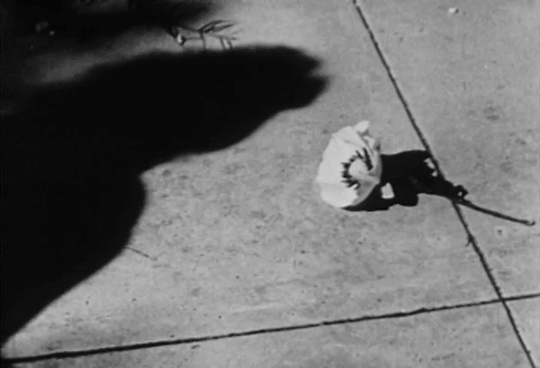

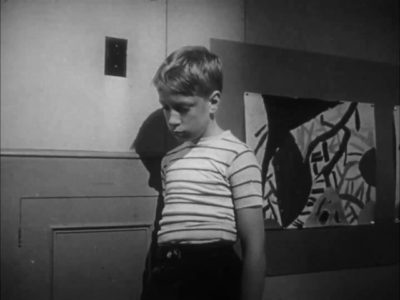
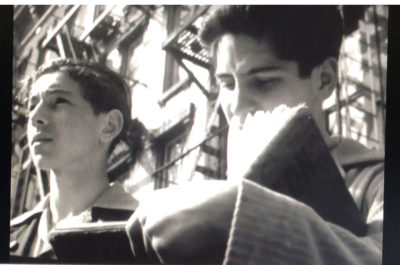

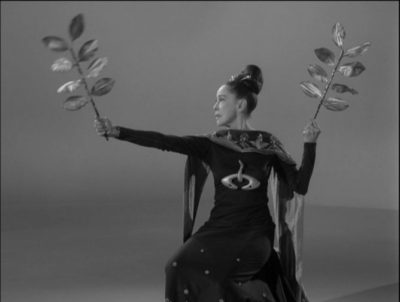

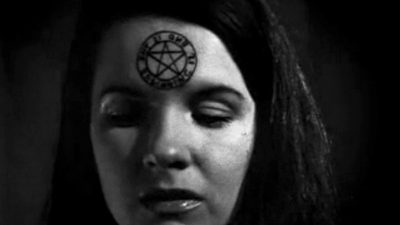

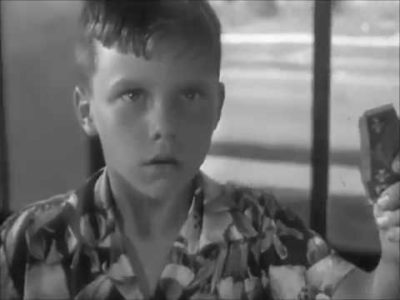





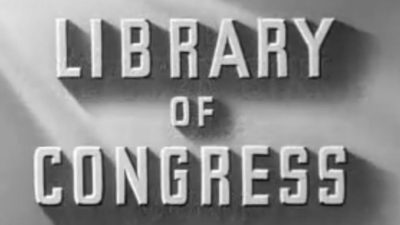

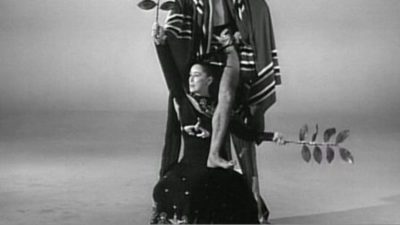

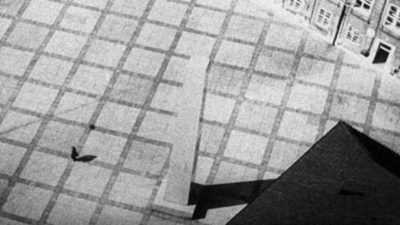



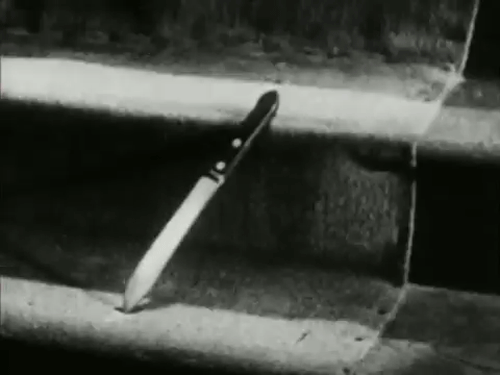
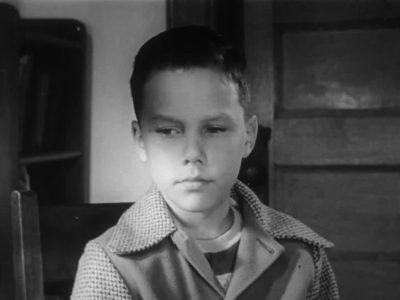
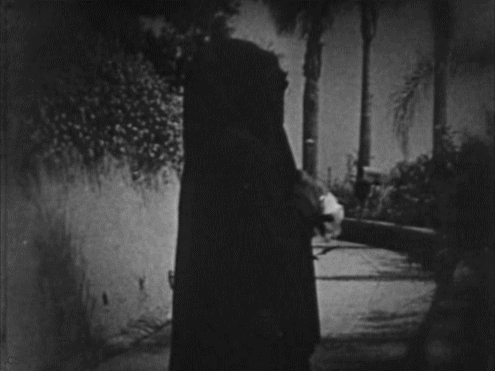

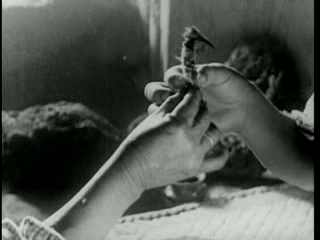
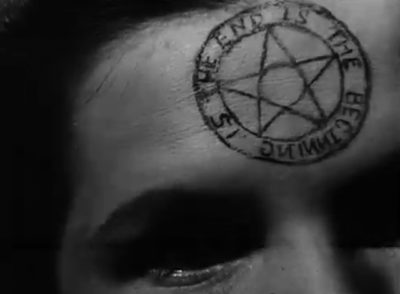

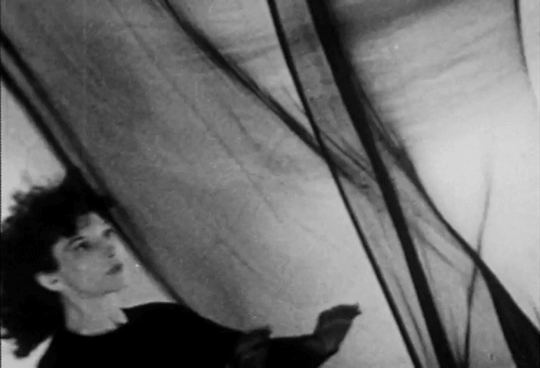
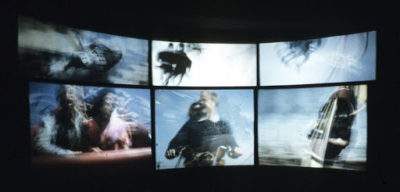
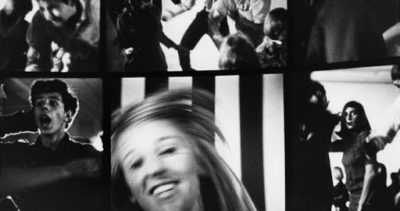


____
Further
Alexander Hammid @ IMDb
Alexander Hammid profile @ monoskop
Alexander Hammid, Filmmaker Known for Many Styles
Alexander Hammid and the Avant Garde
AH @ MUBI
the american dream of alexander hammid
Alexander Hammid: From Prague to New York – A Lifetime of Filmmaking and Artistic Collaborations
Maya Deren by Alexand(e)r (Hammid) Hackenschmied
Alexander Hammid @ Letterboxd
Negative Traces: Maya Deren and Alexander Hammid in Los Angeles
We Are Young!
Private Lives: and the Films of Alexander Hammid
____
Extras
Aimless Walk
Alexandr Hackenschmied (Fototorst)
____
Two Memories of Alexander-Sasha Hammid
by Jonas Mekas
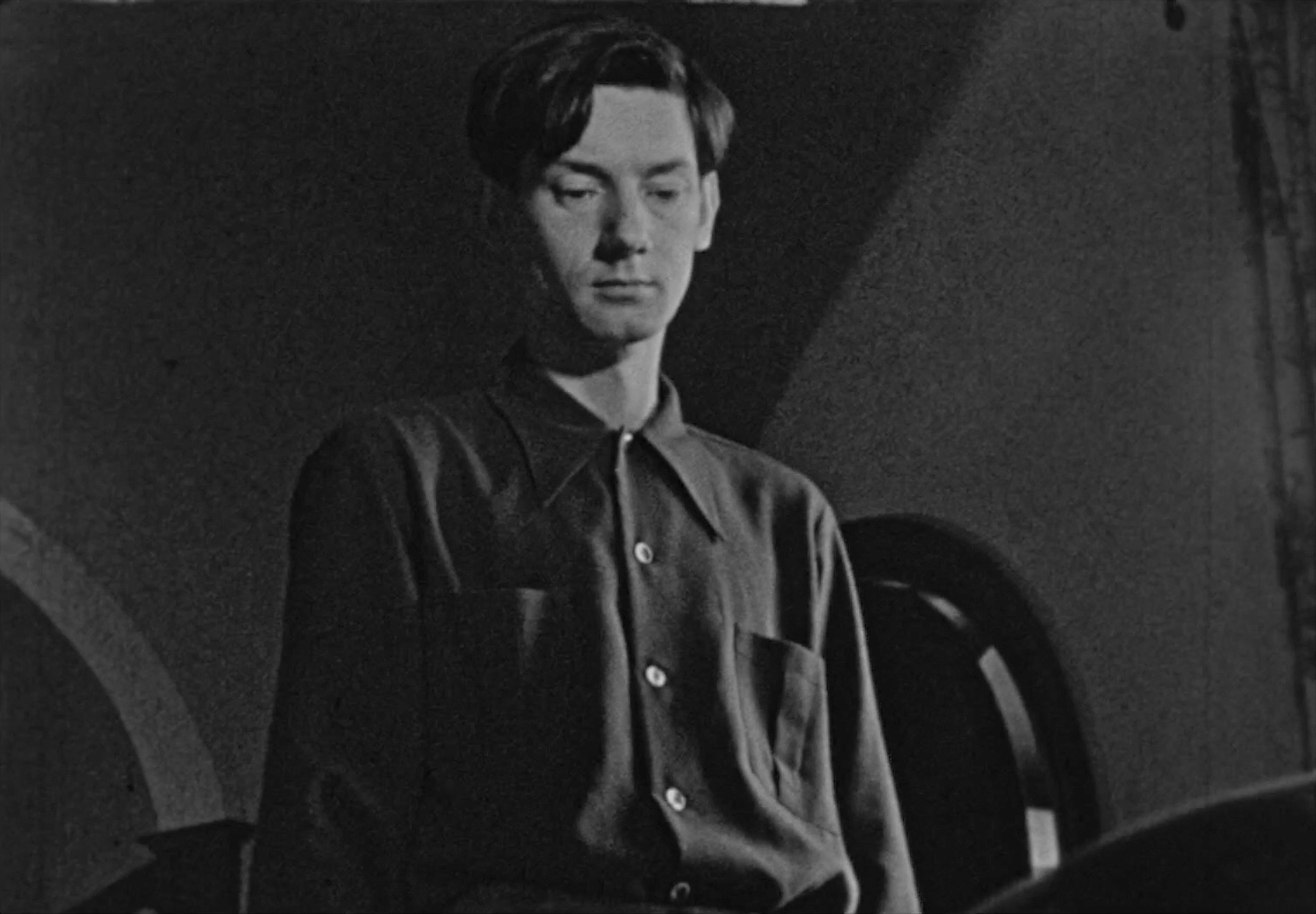
Alexander Hammid died on July 26, 2004 at the age of 96.
Born in Czechoslovakia in 1908, he gained fame with two films he made together with Herbert Kline, Crisis (1939) and Lights Out in Europe (1940)—the two films in which he warned the West about the rise of Nazi Germany. In 1943, in Los Angeles, he married Maya Deren and was the co-maker of her first film, Meshes of the Afternoon. Later he made many important documentary films of musicians and dancers including Arturo Toscanini, Pablo Casals, and Martha Graham. He was known for his very direct style and great respect and love for the subject he was filming.
MEMORY ONE
The year was 1953. I had just moved into 95 Orchard Street place. The rent was $14.95 a month. During the days I worked at Lenard Perskie’s Graphic Studios on West 22nd Street, doing camera work. We did work for the international edition of Life magazine. I remember making for Archipenko copies of his old photographs. But my real work was to catch up with the best of New York’s culture. Especially, from the day that I landed in New York—that happened on October 29, 1940—I submerged myself into the world of cinema. One of my universities was the MoMA and its 5:30pm daily screenings. Another was Cinema 16 and its monthly screenings of experimental films at the Needle Trades School on West 24th Street. I had to see—and did see—everything that was screened in New York and I had to read everything that had been published on cinema in English. One publication that was always mentioned with great respect, in special publications on film as an art, was a mysterious book entitled An Anagram of Ideas on Art, Form, and Film by a certain Maya Deren. I combed all the bookshops and libraries, but could not locate it. I got so frustrated in my search that I decided to locate the author of the book. I had heard that she actually lived here in New York on Morton Street. I was so obsessed with the book that I decided to call and ask her to lend me a copy of the book. And so I did.
A husky voice came on the line. She was Maya Deren, she said. I presented her with my problem. “Come, of course I’ll lend you the book,” she said. We made an appointment.
At the appointed time I arrive, ring the doorbell, and begin to climb up to I think the fifth floor. I arrive at the top of the stairs and there is this woman, Maya Deren, staring at me very weirdly. I expected to meet her very simply and normally. Instead, I found this woman who seemed sort of panicky. I looked at her strange stare and I didn’t know how to react. She was really panicky.
“Anything wrong?” I managed to stammer.
The silent panic continued another moment, then Maya said:
“I really thought you were Sasha. You looked so much like Sasha and I had not expected him.”
I was a little bit confused. But as she received me and we talked it became clear that Sasha was her recently divorced husband Sasha Hammid. Still in my old European Displaced Persons camp cloths, I was very European looking and when she showed me some pictures of Sasha I understood how close our resemblance was.
That’s how I met Maya Deren. Not as myself, but as a doppelganger of Alexander-Sasha Hammid. But we became very good friends immediately. And, of course, I walked out that afternoon clutching in my hands the thin volume of Anagram.
MEMORY TWO
I met Sasha Hammid in real life in 1961. I was in the process of making my first “real” film, Guns of the Trees. Adolfas, my brother, thought we should get a car to help us move around. I don’t drive, but Adolfas does. We were told that Hammid had a car he was trying to sell. So we went to see him.
The first thing that we really appreciated was that the Hammids, Sasha and his wife Hella, treated us with a good meal. We were always hungry in those days; we put every penny either into our filming or Film Culture magazine. So a meal was always very welcome. Hella even gave us a big bag of food to take home with us. We especially liked her bread, which she baked herself. And of course we bought their old used car. They sold it to us for practically nothing. Their children called it Papacar. The Papacar served us faithfully during the filming of Guns. Whenever we visited the Hammids, the children always were asking us about Papacar. They were very attached to it.
Sasha helped us in another emergency. We had need of a tripod. When we told this to Sasha, he went to the closet and brought a beautiful giro-tripod. “Here it is, use it.” So we took it and used it for a lot of shooting. But one night we were stupid enough to leave it in the Papacar in the street. Next morning it was gone. Luckily, Adolfas was smart enough to insure it. For months we hid from Sasha the fact that his tripod was stolen. Then three months later, we got the insurance money, $300 of it. So we stopped to see Sasha at 1 West 89th Street, where he always lived, and we handed him the money, apologizing profusely.
Sasha looked at us in disbelief then he began laughing. “Yes,” he said, “thank you very much, but that tripod was worth only 30 dollars.”
We couldn’t believe it. We were quite ignorant about the prices of movie equipment. But we had to believe Sasha. So we had some good food and some good wine and we celebrated the stealing of the tripod. I think we split the money.
As years went, we had many good days and evenings with the Hammids. He was one of the nicest people I have ever met in my life.
______________
14 of Alexander Hammid’s 20 films
_____________
The Prague Castle (1931)
‘Hammid bought a handheld camera Bell-Howell and made his second film, Na Pražském hradě [Prague Castle], in close collaboration with the composer of the sound track, striving for an organic intertwining of image and music.’ — letterboxd
the entirety
___________
w/ Herbert Kline Crisis (1939)
‘Crisis is a feature-length documentary about the 1938 Sudeten Crisis. It was released briefly before the Nazi occupation of Czechoslovakia on March 15, 1939.’ — collaged
the entirety
_______________
w/ Herbert Kline The Forgotten Village (1941)
‘In this powerful 68-minute documentary is an unnamed, poverty-stricken Mexican community. In grim detail, the film records the life-cycle of a typical peasant family, from birth to death. The narration was written by John Steinbeck.’ — MUBI
the entirety
________________
w/ Maya Deren Meshes of the Afternoon (1943)
‘Meshes of the Afternoon is the 14-minute avant-garde film that director Maya Deren made in collaboration with her then husband, Alexander Hamid. The film is silent except for snippets of added sound, such as the ticking of a clock. In 1957, the Japanese composer Teiji Ito, Deren’s second husband, added an ambient, dreamy soundtrack to the film. The action centres around a woman (played by Deren) who repeatedly follows another woman, the latter of whom is dressed in black, is holding a flower and has a mirror for a face. Every time this mysterious presence disappears around the corner, Deren enters a house. The second time she goes inside, her first version is still there; the third time, there are three of her. The film is black-and-white with sharp shadows and many diagonal lines, and was shot with a camera that follows the woman from striking angles. A knife, a telephone and a key return time and again and sometimes abruptly merge. Subsequently, a man (played by Hamid) enters this menacing, circular fantasy world. Born in Kiev, Ukraine, director Deren was a prominent experimental filmmaker in New York in the 1940s and 1950s. Meshes of the Afternoon won the Grand Prix Internationale at the 1947 Cannes Film Festival.’ — idfa
the entirety
________________
w/ Maya Deren Witches Cradle (1943)
‘Witch’s Cradle, is a silent, unfinished film of around 12 minutes’ duration dating from 1943. When exactly in 1943 it was made is uncertain, but it would appear that it pre-dates even Meshes of the Afternoon, the film Deren made with Alexander Hammid in the same year which established Deren, previously known only as a dancer, as a vital force of non-linear filmmaking. That alone would prevent the footage from being a mere cutting-room curio, but it is her collaborator who also ensures this fragment’s status as an important document of filmic Modernism. Marcel Duchamp collaborated with Deren and Hammid on the film. Duchamp himself is seen briefly in Witch’s Cradle; Deren doesn’t appear in front of the camera (as she would in almost all of her later films).’ — Quasimodo King
the entirety
_________________
Valley of the Tennessee (1944)
‘U.S. Goverment film about the creation of the Tennessee Valley Authority in the 1930s and 1940s.’ — MUBI
the entirety
_________________
Hymn of the Nations (1944)
‘An American documentary, Hymn of the Nations, using archival footage from 1943 and 1944, includes a stirring performance by the NBC Symphony Orchestra, conducted by Maestro Arturo Toscanini, and accompanied by Jan Peerce and the Westminster Choir in New York City, which was broadcast nationally on the radio at 5 p.m. on Sunday January 31, 1943. This documentary film, directed by Alexander Hammid, presents the performance of Giuseppe Verdi’s overture to the Italian opera “Forza del Destino” (The Power of Fate) and also his Inno delle nazioni (Hymn of Nations).’ — Perry J Greenbaum
the entirety
_________________
Library of Congress (1945)
‘There’s so much to like in this Academy Award-nominated film, which celebrates reading and scholarship and humankind. The shots of patrons looking through the card catalogue speak — well, volumes. Watch too for other forms of beautiful technology and several musical surprises. Alexander Hammid directed. The narrator is Ralph Bellamy. The book that the boy is reading at the beginning and end is Lucy Salamanca’s Fortress of Freedom: The Story of the Library of Congress (1942).’ — collaged
the entirety
________________
A Better Tomorrow (1945)
‘A Better Tomorrow is a documentary short that focuses on New York City progressive public schools. One of the more inspiring and hopeful movies ever made about American politics, in that it believes that devoted young people of color can bring about change.’ — m_hulot
Excerpt
________________
w/ Maya Deren The Private Life of a Cat (1947)
‘A day in the life of a cat, filmed from a cat’s-eye view. This film was circulated in two versions: a silent version without narration and a somewhat longer sound version with a narration read by filmmaker Alexander Hammid’s then-wife, Maya Deren.’ — MUBI
the entirety
______________
Angry Boy (1950)
‘Simple, affecting case study produced for social workers and psychologists and illustrating how counseling can help children come to terms with anger. Young Tommy Randall has been caught stealing money from his teacher’s purse and receives help from a psychiatrist. A psychiatric social worker enables his mother to better understand her relationship with her son. This sensitive documentary is filled with revealing behavioral details. Shot in the Huron Valley Child Guidance Clinic near Ann Arbor, Michigan. Also released in 16mm. Known for his avant-garde works, Alexander Hammid made other psychological films in the 1950s.’ — Old Reel Server
the entirety
________________
The Gentleman in Room Six (1951)
‘With Hans Heinrich von Twardowski, Norma Winters. Cinematography by the great Boris Kaufman. Offbeat little drama about a bitter guy who lives in a hotel and (spoiler alert) is Hitler.’ –– unpopulararts
the entirety
________________
Night Journey (1961)
‘Night Journey, the dance, had its premiere only two and a half years after Appalachian Spring, and it is a close cousin. It too has a stream-of-consciousness narration: Jocasta, as she is about to kill herself, remembering what has happened to her. It too contains soul-delving solos, broken up by ensemble dances. Here, however, the ensemble is a darker element. As the story was taken from Greek tragedy, so the corps is the equivalent of Greek tragedy’s chorus. They tell us how to feel: afraid mostly. In this piece Graham pushed her habitual economy to its limits.’ — Joan Acocella
the entirety
________________
To Be Alive (1965)
‘Most of the exhibits of the New York World’s Fair were real: models and buildings that portrayed the future and the past. But one of the most acclaimed exhibit of the fair was the Johnson’s Wax pavilion – a short movie called to be alive!
‘Part of it was a gimmick. This was a few years after Cinerama brought the (mixed) wonders of a super wide screen to theaters, but the fad had not quiet died yet. To be alive! tried something similar, but instead of having three cameras projecting across one extra wide screen, it use three regular-sized screens separated by a foot of black. This was easier to deal with technically, and audiences learned to ignore the black space immediately.
The movie is the musings of a narrator, who, tired of the rat race,* starts to wax poetic about how things were when he was a child. The movie starts with the life of a child, and then follows a life span as it celebrates human existence.
‘The strength of the film is in its images, which show people from all over the world, doing what the love and enjoying the world around them. The three-screen format was a feast for the eyes.
‘The film was a sensation. The New York Critics Film Circle gave it a special award, unprecedented for a nontheatrical film. It was considered ineligible for an Oscar because of its format, so they cut it down into on single-screen version that played in LA and won the award for documentary short.’ — Chuck Rothman
the entirety
*
p.s. Hey. ** Dominik, Hi!!! God, I hope your heat abates. We’re being so lucky here in Paris. Velocicoaster was fantastic, very fast and inventive. Would definitely be in my top 10 favorite coasters. Did you get your tattoo? What’s ‘the figure’? What did your bro get? Ha ha, I spent a few minutes trying to unsuccessfully (but pleasurably) imagine what having his asscheeks as lungs would feel like. I finally got a full night of sleep last night, so I’m ready for your orgy love, thank you, and of course you’re invited. We can split the dungeon rental. Love inviting you along to a coffee I’m having in the next couple of days with a famous young pop star (whom I can’t name, at least not yet) and his boyfriend, G. ** Sypha, Hi, James. I expected to loathe ‘Tenet’, and I was so surprised that I didn’t that I might have given it more credit than it’s due, but I thought, Okay, a 200+ million dollar tricky, incoherent film is kind of cool. ** Bill, Hi. Those slaves made ‘The Sluts’ seem like a milk-fed puppy. I think my publisher is at least thinking of getting me to SF for a bookstore reading re: ‘I Wished’, and I’ll push for that. Would be very cool to see you! ** David Ehrenstein, Howdy, David. Okay … Everyone, Mr. Ehrenstein has a message/offer for y’all. Here he is to tell you about it. David: ‘Dear Dennisitas. I’m having a sale. LAVISHLY ILLUSTRATED FILM BOOKS FOR SALE. Martin Scorsese’s “The Irishman”, George Clooney’s “The Midnight Sky,” Audrey Hepburn $50.00 each. numerous books, CDs and DVDs for sale at bargain prices. Call me and come over ASAP. Cheers, David Ehrenstein.’ I hadn’t heard that use of that term before. I wonder if S.E. Hinton took the name of Ponyboy Curtis in ‘The Outsiders’ from that. ** Steve Erickson, God knows the world needs non-creepy executioners. I mostly admire Tim Hunter because of ‘River’s Edge’, but I remember thinking ‘Tex’ was quite good, and ‘The Failures’ was pretty interesting, as I recall. I have friends who think highly of ‘Control’, but I haven’t seen it. Ha ha, a ‘Meg’ sequel. ** _Black_Acrylic, Yes, the blog clock is functioning again. Excellent that you’re writing and going to take that short stories class. Love what you did when you were back in the heat of your writing prioritising days. ** Corey Heiferman, Very kind of you to hope Cargo would get to snuggle up in bubble wrap. Great about the poetry nights, and about the festival! You’re cooking. Oh, hm, I don’t specifically recall how doing the reading series at Beyond Baroque way back when affected my writing. I seem to have written a lot. I think the fact that I was doing a lot of readings myself back then probably had a big affect. Maybe not the same thing, but it took me quite a while to get my footing as a writer in the early years of doing the blog. It really ate up my creativity and rhythm for a while. But I eventually sorted it. Is that what you mean? ** T, A pretty penny, wouldn’t you think? Me too re: being so impressed and envious about the slaves’ (and escorts’) writing. Funny that. I do edit the texts a bit, but the meat and spin of them is all theirs. I always imagine they’re very emotional when they write their texts, and I think that’s where a lot of the force and maybe creativity comes in, but I guess they could be calculating bastards for all I know. Anyway, yeah, good stuff. Yes, moot your idea to him! He could be your gift horse (whatever that means). My weekend was basically a wash of sleep deprivation-related blah, but the bad spell might have broken last night. Life feels possible this morning. At least you got through the reunion with your wits intact? Oh, Nemours. I see that one can travel from there to Paris, to and fro, by RER in 1 hr 9 minutes. Only 8 stops. And your Paris arrival/departure spot is Gare de Lyon. Not bad at all. Let’s definitely hang. Yeah, keep me posted. And happy Monday! ** Misanthrope, Thanks, pal. What’s been going on with you? ** Brian, Hi, Brian! Yeah, a wilder than even usual bunch. Totally get the anxiety. Like I’m sure I’ve said, to me, moving homes is inherently really stressful, even if it’s just across town. But, yeah, the liberation once you’re in the new digs and arranging your stuff there can be quite heady. So glad you liked ‘Satyricon’. An all-time fave, and, me too, definitely my fave of his films. Nuts. Those sets. Those set pieces. It even makes Jodorowsky’s extravaganzas seem like high school productions. My weekend was just a haze due to awful, awful jet lag, but I think, hope, I’m in the clear as of today, but we’ll see. I’m raring to make up for lost time. Is your week dawning all right? Best of the best! ** Right. Alexander Hammid is best known, when he’s known at all, as Mr. Maya Deren, but he made some very interesting films both with and without her. Investigate the oeuvre, if you will. See you tomorrow.




 Now available in North America
Now available in North America 
Hi!!
I’ve never heard of Alexander Hammid; I’m grateful for the introduction. I’ve just finished “Angry Boy.” It surprised me how relevant it still was even though it came out in 1950. (Not to mention how rare it still is here in Hungary to actually send children to counselling instead of punishing them when they act out.)
Our weekend was quite stormy, and though it’s still pretty hot, it’s more bearable now. Yeah, this weekend was all kinds of great, we just didn’t get to the tattooing part, haha. Once we do, I’ll send you a picture of mine!
I’m so happy the Velocicoaster was awesome (looks like the only thing they weren’t very creative about was the name, haha)! I kept my fingers especially crossed for that one! And finally, it looks like the jet lag is leaving you, or you’re leaving it, more like. Either way, I’m so glad. I don’t know how you feel about it, but not being able to sleep turns me into a complete mess. I’m fresh and ready for the orgy today, though – fully into splitting the dungeon rental. Thank you for the invitation.
Ah, I’m more than happy to join your as-yet mysterious love! Thank you! Whenever you’re allowed to name your coffee companion, please do so! I’m really curious, hah. Love waking up in the middle of the night to find his goth boyfriend secretly binge watching “Gilmore Girls,” Od.
Dennis, what a great blog today. I know of Alexander Hammid, but not his actual filmworks. Looking forward to dwell on this specific post. Merci!
I just watched a silent Meshes of the Afternoon on YouTube and loved it. A proto-Giallo if ever there was one!
I’m afraid I’m in the “who is Hammid” team. But I do love Meshes of the Afternoon, and will check out other Hammid projects soon.
Let me know when your fall trip is finalized, Dennis. If you do head up to SF, maybe we can organize a group dinner? I don’t know which DLs are here, other than M Kitchell.
Here’s the new short piece:
https://soundcloud.com/bill-hsu/bellows-stereo
Bill
Welcome back, Dennis. Hammid was such a big deal for me when I was in school. I haven’t thought about this in ages. Thank you for the reminder.
I’ve been busy. Lots of photography. I’ll send you a few new things. Will be having a show in LA in November.
Hope you are good, dude! Missed you.
B
Dennis, I’m joining Bill in the “Who is Hammid?” team, too. Duh. But you already knew that.
Pics/vids of those old Hitler Youth rallies are just sooo….weird, no?
Me, ah, I’m all right. I’ll be 50 next Tuesday, and I’ll be going to my best friend’s beach house on the South Jersey Shore Saturday through Monday or Tuesday. I took off the first three days next week. Otherwise, things are the same. Plugging away at stuff, slammed at work, etc. I have lost 14 pounds in the last 6 weeks through strict diet and exercise.
I had a cold a few weeks ago and then started feeling odd Friday. Tightness in my chest and kinda flu-ey. But no temp, no chills, no aches, no loss of appetite, et al. I just feel a little…off? Hard to explain. That, and my neck’s been sore/stiff for no reason. Hmm. Anyway, I got on the zinc again and I am actually feeling a lot better today.
Almost to 100 pages in my novel go-over. Still practicing the guitar. Learning Benatar’s “Hit Me With Your Best Shot” now, hehehe. All power chords, but they’re a little tricky. Just a little. 😀
Hey Dennis,
Hammid’s a new name to me too, though Deren isn’t. Shamefully, however, I haven’t seen either of their films, beyond some brief clips of “Meshes of the Afternoon” in my first semester introductory film course. Gotta rectify that sooner or later, it being such a major text. And fill in the gaps with Deren’s and Hammid’s other works besides. You’re right about moving away. Scary stuff, but I’ll (hopefully) adjust. Co-signed all of what you say re: “Satyricon”; everything about it continues to linger in my memory just like a nightmare. I haven’t seen any Jodorowsky yet! Need to. Though I’ve heard mixed things. But I’d like to make my own mind up, of course. “Holy Mountain” is probably the place to start, no? My week is off to a bit of a rough start. My dog had to get some heavy duty surgery today and she’s going to require a lot of care in the coming weeks, which is a little daunting, but it should be fine. We have to replace the washing machine, the heater broke, etc. First world problems, maybe, but still stress factors. Still, I’m seeing friends tomorrow, so that should be nice. And on Saturday we’re all going together to see “Eyes Wide Shut” in 35mm on the big screen. None of us have ever watched it before. Looking forward to it. Also I’m trying to decide if I want to head out the weekend after to see some Kenneth Anger shorts projected. Probably maybe, I think, unless something else comes up. And I’ve been listening to the new Billie Eilish album; that’s how much of today was spent. Pretty mixed on how I feel about it as of yet. Anyway that’s what’s up. I hope by the time you read this message your jet lag haze has cleared and you’re back in sync with your environment. Bonne nuit!
“Ponyboy” predatesSuzie Hinton by EONS. It’s clearly how she saw the character she created
I was sent a link t see “Annette” on line yesterday. It’s exquisite. I’m seeing it on a regular screen this acternoon.
I saw “Meshes of the Afternoon” one in the house in which it was shot which is on Kings Road just above Sunset Blvd,, halfway to Tony Richardson’s
Hi, Dennis.
Hope you’re doing well. (Was just in Paris!)
So, for starters, I’m a huge fan. I just finished reading “The George Miles Cycle,” and I think my favorite book was “Closer.” I also ordered “Gone” from Infinity Land Press and it’s such an amazing book. (However, I have to admit, I did miss Randy Kraft and Robert Berdella, as they’re not featured. I think they were both apprehended after the book’s conclusion….)
Anyway, I’m really curious about the role of coprophilia in “Closer.” I believe that it’s briefly explained in the novel, but I was wondering if you could possibly elaborate.
(My friends and I passed by a sex shop in Paris and we decided to go in. Inside, there were various wire bound booklets dedicated to multiple fetishes—almost a directory of sorts—and I dared my friend to open up the scat one, but she was too scared—and, I was, too.)
Thanks so much for your career. Your writing has taught me so much about sentences. I’ve really learned a lot from you. As a young writer, it’s been such an influence on my own work. I’m making my way through all your books. Slowly, surely.
Best,
Myles.